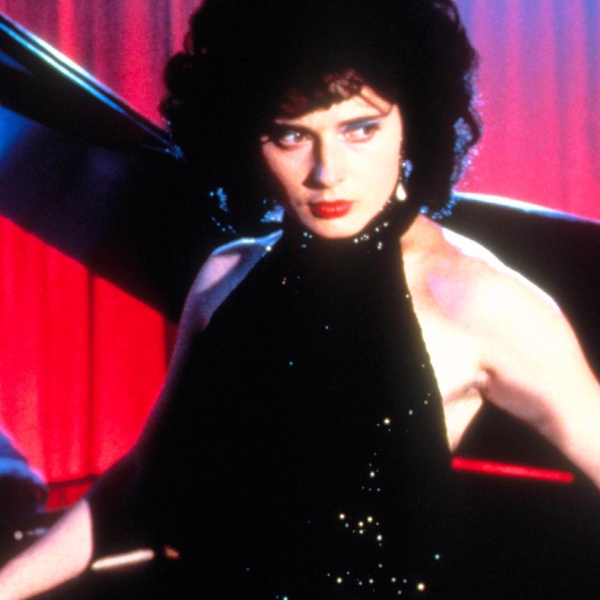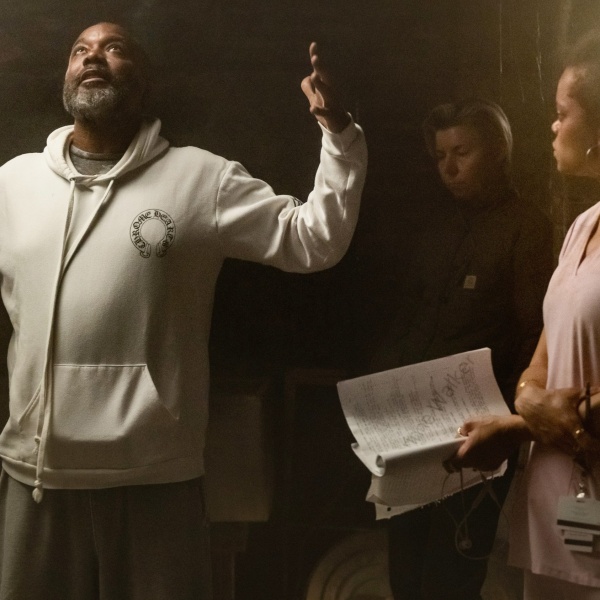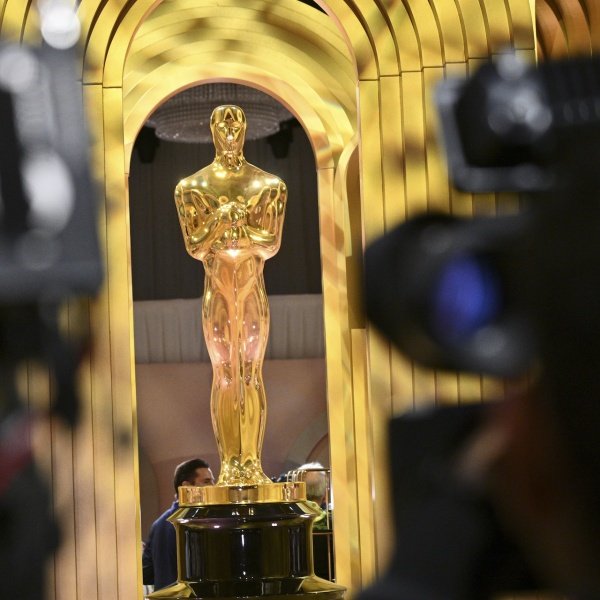
On Friday nights, IndieWire After Dark takes a feature-length beat to honor fringe cinema in the streaming age.
First, the spoiler-free pitch for one editor’s midnight movie pick — something weird and wonderful from any age of film that deserves our memorializing.
Then, the spoiler-filled aftermath as experienced by the unwitting editor attacked by this week’s recommendation.
The Pitch: Then All the Cavemen (and Founding Fathers) Loved Him
The magic of a good Christmas is an unparalleled childhood experience, but it always ends with the anticlimactic holiday hangover that is New Year’s Eve and New Year’s Day. The final day of the year and the first day of the new one can be plenty of fun for adults, as they revolve around a paradoxical combination of socially sanctioned binge drinking and a renewed focus on fitness and career goals. But since one of those things is off limits to children and the other is completely disinteresting to them, it’s hard to blame a child for seeing the final holiday as little more than a dreaded reminder that school is starting again soon.
It makes perfect sense that the Christmas Special Industrial Complex has largely steered clear of the year’s most adult-oriented holiday, save for the occasional “And a Happy New Year!” platitude yelled by Santa as he dashes away while credits roll. But after a decade of dominating the industry with hits like “Rudolph the Red-Nosed Reindeer,” “Frosty the Snowman,” and “Santa Claus Is Coming to Town,” Arthur Rankin Jr. and Jules Bass decided that 1976 was the year to swing for the fences and attempt a full-on New Year’s special. The result was the utterly bizarre “Rudolph’s Shiny New Year,” which remains a cautionary tale of geniuses flying too close to the sun.
The hour-long monstrosity, which aired on ABC in December 1976, serves as a direct sequel to the original “Rudolph” special. After guiding Santa’s sleigh through a Christmas Eve blizzard, Rudolph (with his nose so bright) is enlisted for a task that’s apparently more important but considerably less interesting: helping Father Time find a missing Baby New Year in order to ensure that a new year can begin. If he fails, Santa informs him that it will stay December 31st forever and there will never be another Christmas.
Viewers are quickly treated to a needlessly complex backstory that shines light on how little New Year’s lore actually exists in our pop culture. While babies are a common NYE motif, the special takes it a step further to craft a convoluted mythology to explain the passage of years. Each December, a New Year’s baby is born as a symbol of the new beginnings that a new year offers. But for some reason, that baby is damned to the terrible fate of aging an entire lifetime in one year. By December 31st, he takes his place as the new Father Time, while the old Father Time disappears to his own private island in the Archipelago of Last Years. His island will be styled with the aesthetics of the year he presided over, allowing each year to spend an eternity in a sad time capsule of his past glories.
But the one flaw in this otherwise brilliant system is that this year’s baby ran away. You might think it’s because he didn’t want to age 75 years during his first trip around the world before being exiled to his own personal Elba. But no, he just ran away because he didn’t like that people laughed at him for having big ears. So Rudolph and an incoherent coterie of strange characters including a clock-man named General Ticker, a caveman who ruled One Million B.C., and a man who looks and acts exactly like Benjamin Franklin but is actually the anthropomorphic essence of the year 1776 (I wish I was joking) are forced to traverse the archipelago in search of the missing baby.
Visiting different islands allows them to do something resembling time travel, but the loose mythology allows them to visit actual historical events like the Revolutionary War as easily as nursery rhymes like Goldilocks and the Three Bears and Humpty Dumpty. The entire special gives off a “let’s just throw shit at the wall and see what sticks, because kids will have to like something” energy, except nothing ultimately sticks to the wall.
Still, it’s a must-watch for any Christmas special completionist or fan of 1970s stop-motion oddities. The meandering attempt to saturate the screen with recognizable faces turns “Rudolph’s Shiny New Year” into something resembling a holiday “Magical Mystery Tour” for the whole family. If you’re still filled with the Christmas spirit and not ready to shake the holiday vibes, this could be the dose of weirdness you need to shock your system into January mode. —CZ

The Aftermath: And, Lo, the Vast Mystery of the Holiday Multiverse Grew Three (Ear) Sizes That Day
Ever since Jack Skellington stumbled onto Christmas Town, the holiday multiverse has fascinated me. Whether it’s a cinematic cross-over event between mythical beings à la “The Santa Clause” franchise, or the connective oral tradition that’s bound seasonal stories to one another for centuries, the sense that all annual traditions stem from some magical realm or source outside our god-fearing world is comforting. Or at least, it was comforting — until “Rudolph’s Shiny New Year” shot my appreciation for the concept clear out of the night sky. (Like a baby flying by his laughably big ears suddenly hit by a whale’s well-aimed waterspout, I tell you!)
My understanding of human history is good enough to know that an Earth perpetually suspended on New Year’s Eve 1976 wouldn’t be an awesome one; for starters, the Son of Sam would never be arrested, and “Star Wars” wouldn’t come out. (OK, maybe that second reality would be better.) But the extreme stakes of screenwriter Romeo Muller’s space-time terrorist attack carried out via cartoon vulture — operating under something resembling Andrew Niccol’s “In Time” rules no less! — is just one of the myriad mysteries that alarmed me in this baffling concoction of world-building. “Shiny New Year” had me enraged and hooked from start to end, offering up a puzzle of perplexing nonsense strong enough to drown out a week I’ve otherwise devoted to cheese and regret.
The following are among the endless questions I was left to ponder when presented with Zilko’s pick: an utterly deranged consideration of festivity-based fantasylands with some of the least catchy music imaginable. (It should go without saying to those who have actually watched the film that “The Moving Fingers Writes” may very well be a chart-topping single in the torture chambers of Hell.) Some thoughts:
- At what respective narrative points are the fairytales in 1023 A.D. suspended? Is the bear family perpetually coming home to find blonde-haired intruders of various sizes invading their personal space? And did Cinderella and Prince Charming just happen to be meeting and doing the glass slipper moment when Rudolph ran through – or was that a private, non-plot driven foot affair they do regularly?
- If all fairytales take place during the year 1023 A.D., why does Red Skelton’s Baby Bear look like the beaver Mel Gibson played in that 2011 movie directed by Jodie Foster? And to what god does he answer?
- There’s very little to recommend a world ruled by a knockoff Benjamin Franklin, perpetually stuck looping the Fourth of July. But there’s even less to recommend it if that world is a purgatory for souls stuck living ad infinitum in pre-indoor plumbing 1776. Who are these American townspeople people living under the kite-loving overlord’s thumb? Whom did they wrong? And do they at least get some anachronistic watermelon slices and popsicle sticks?
- Happy’s baffling lack of aging raises both metaphysical quandaries and alarming child welfare concerns. They say who watches the watchers, but can you call DCFS on Father Time? Is there a Mother Time in the picture?
- If Rudolph’s shiny red nose can emit enough heat to melt inches thick of solid ice, is Santa having him researched as a possible silver bullet for skin cancer? Or nuclear disasters, perhaps?
- Moreover, why is any of this New Year’s Baby silliness Rudolph’s problem? Or Santa’s for that matter? They just got off work; call in the Easter Bunny!
- How long in human seconds is “a few bongs”? And what stoner staring at a clock named a socially spineless camel “The Great Quarter Past Five”?
- Will any other film ever use the line “Come on, men! Let’s get, Happy!” so innocently? —AF
Those brave enough to join in on the fun can stream “Rudolph’s Shiny New Year” on AMC+ and rent it on various VOD rental platforms, including Amazon Prime Video. IndieWire After Dark publishes midnight movie recommendations at 11:59 p.m. ET every Friday. Read more of our deranged suggestions from the 2023 holiday season…
- ‘The Nuttiest Nutcracker’ Dishes Out Food Puns Galore in Rancid Christmas Eve Adventure from 1999
- Tim Curry Will Shake Your Soul in Gleefully Noxious ‘Beauty and the Beast: The Enchanted Christmas’
- ‘Santa and the Ice Cream’ Bunny Is a Hauntingly Odd Christmas Fairy Tale That Should Be Kept from Children at All Costs
- Ski Lift Survival Horror ‘Frozen’ (2010) Is Still the Best Cinematic Homonym in the Game
- ‘Christmas Comes to Pac-Land’ Is the Chomp-Filled ’80s Christmas Relic You Never Knew You Needed
- The Late Julian Sands Blows the Lid Off Hulu’s Holiday Horror Comedy ‘A Nasty Piece of Work’
- ‘The Yattering and Jack’ Warns Against Satanic Turkey Preparation This Thanksgiving Eve





